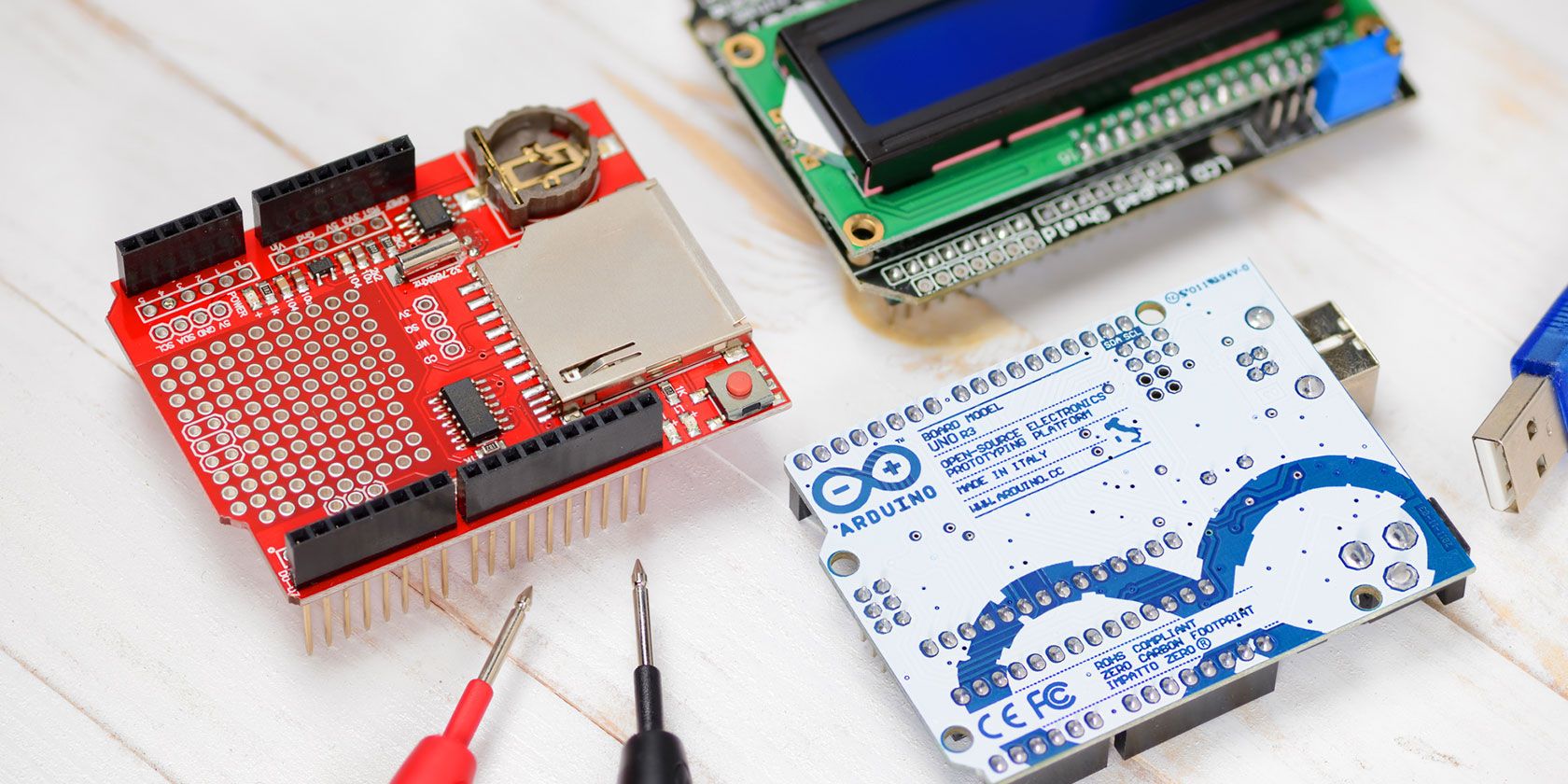Microcontrollers mostly follow similar designs. They have limited onboard memory, run on low power, and feature a set of General Purpose Input and Output (GPIO) pins, programmable usually via USB cable.
There are so many boards to choose from that it can be hard to pick out the perfect one for you. Beginners have a much different experience working with hardware than people who may have coded, or tinkered with electronics before.
No matter what level you are at, one of these microcontrollers should work well for you.
1. Best Microcontroller for BeginnersArduino Uno R3
If you have interest in microcontrollers you've almost certainly heard of Arduino. They popularised open-source hobby hardware with their array of development boards and an Independent Development Environment (IDE) for coding them.
The Arduino Uno R3 is the standard Arduino found in most starter kits and is the easiest to use. If budget is an issue, note that Arduino is open-source hardware. Therefore, copies of the design are entirely legal. If you search for Arduino clones, you will find many at a much lower price than official Arduino boards.
2. Best Microcontroller for KidsMakeblock mCore Robot Controller
Hang on, this doesn't look like a microcontroller board!
Well, the mBot Robot Kit has a microcontroller as its brain. Its design makes it perfect for teaching children about robotics without having to deal with complex code. Visual block code, put together in the Blocky app, transmits to the board via Bluetooth to affect the robot's behavior.
You can buy the microcontroller separately from the robot kit, but why would you? Robots are the best!
This kit covers everything from building robots to core programming fundamentals. For introducing microcontrollers to a young audience, there is nothing better!
3. Best Microcontroller for ProgrammersSTM32 F3 Discovery
The STM32 F3 Discovery board is an ARM Cortex-M4-based microcontroller for experimenting with every aspect of hardware programming. The board features built-in motion detection, a three-axis gyroscope, a linear acceleration sensor, and a magnetic field sensor.
There are also eight LEDs in a circular arrangement. Note that this board requires a separate FTDI adaptor for communicating with computers via USB. If you're unsure what that is, one was used in our build your own Arduino guide to communicate with the ATMega328P chip.
Learning how to program the F3 Discovery is a more in-depth process than many other microcontrollers. Luckily, there are libraries to make the process more accessible, and many tutorials start at with the basics. Alongside using the C++ programming language, the board is the subject of The Discovery Book; a getting started guide for embedding the Rust programming language.
4. Best Microcontroller for WearablesAdafruit Gemma M0
With microcontrollers combining advanced control over LEDs and other components with small form factors and low power requirements, it's no surprise they show up in costume design and cosplay. The Gemma M0 board from Adafruit is a coin-sized microcontroller perfect for attaching to LEDs or other components using conductive thread. Alternatively, you can use the built-in RGB DotStar LED.
The ATSAMD21E18 chip (try saying that in a hurry) is a step up from the regular onboard controllers for microcontrollers of this type. While you can use standard Arduino type C++, the board comes preloaded with CircuitPython for Python programming and a native USB connection that other boards of this type usually lack.
5. Best Microcontroller for PowerTeensy 3.2
For raw power in a tiny form factor, the Teensy 3.2 line is widely regarded as the best around. The 32-bit ARM Cortex microprocessor runs rings around almost every other board. Alongside the speed, the Teensy has I2C audio integration and several high-quality analog-to-digital converters (ADCs).
Every pin on a Teensy is configurable as an interrupt, and the boards run with 64KB of RAM along with 256KB flash memory. All of this is Arduino IDE compatible using the Teensyduino library, and if the 28 pins of the Teensy 3.2 are not enough for you, a 48 pin Teensy 3.5 and 3.6 are available from the PJRC website.
6. Best Microcontroller for Intermediate UsersMbed LPC1768 Development Board
Taking the next step on from hobby microcontrollers feels more like a leap. Industrial use embedded hardware can be much more complex, and have a much higher cost of entry on both an equipment and software level.
A good example of a board right on the border between consumer and industry is the Mbed LPC1768 Development Board. This board is a jump up in quality and tools, and the price reflects it. Mbed provides an online IDE for the hardware, and libraries for performing tasks with the GPIO pins and onboard LEDs.
This significant jump in price also reflects a difference in use cases too. Boards like the LPC1768 find use in industry standard situations, and using the board to further your knowledge could be an essential part of learning embedded programming.
Small Boards, Big Plans
This list should help you make an informed decision about which microcontroller is right for you. It is, however, by no means exhaustive, and misses out great boards like the Arduino killing NodeMCU.
Whichever board you settle on, microcontrollers are the perfect way to combine electronics and coding. Any of these Arduino beginner projects will help you get to grips with both!
Image Credit: Ha4ipiri/Depositphotos

